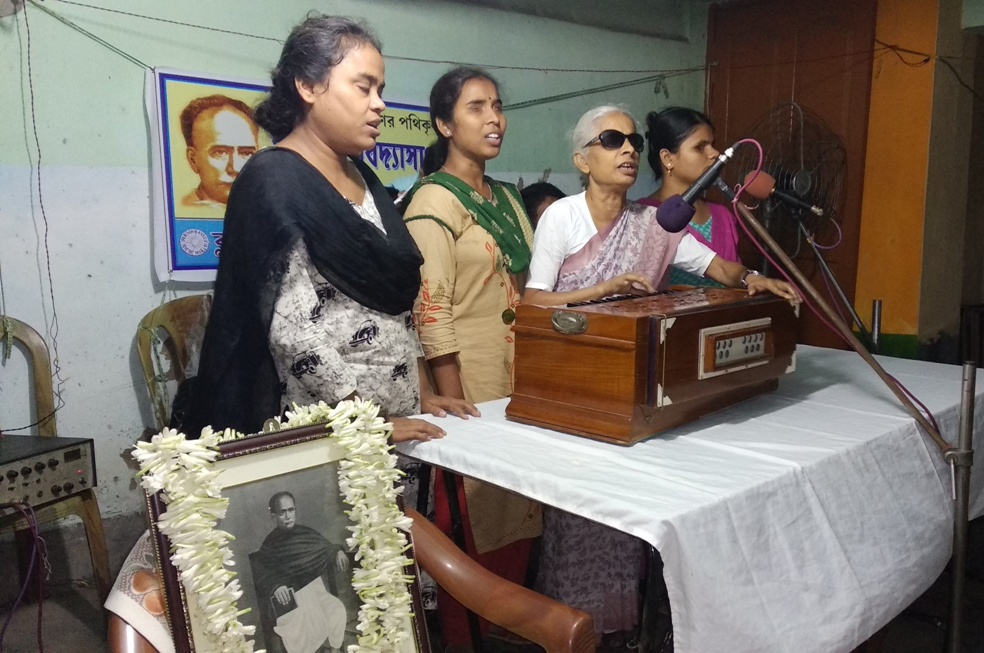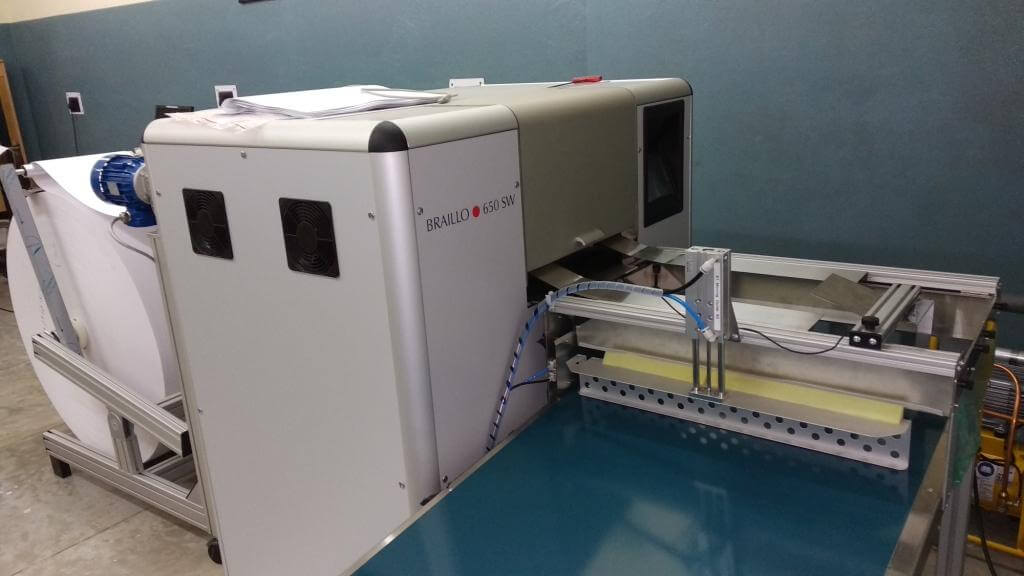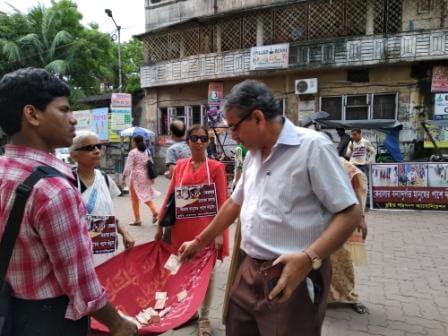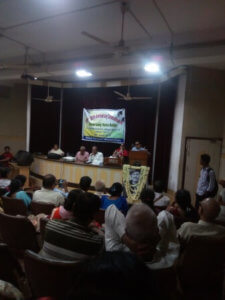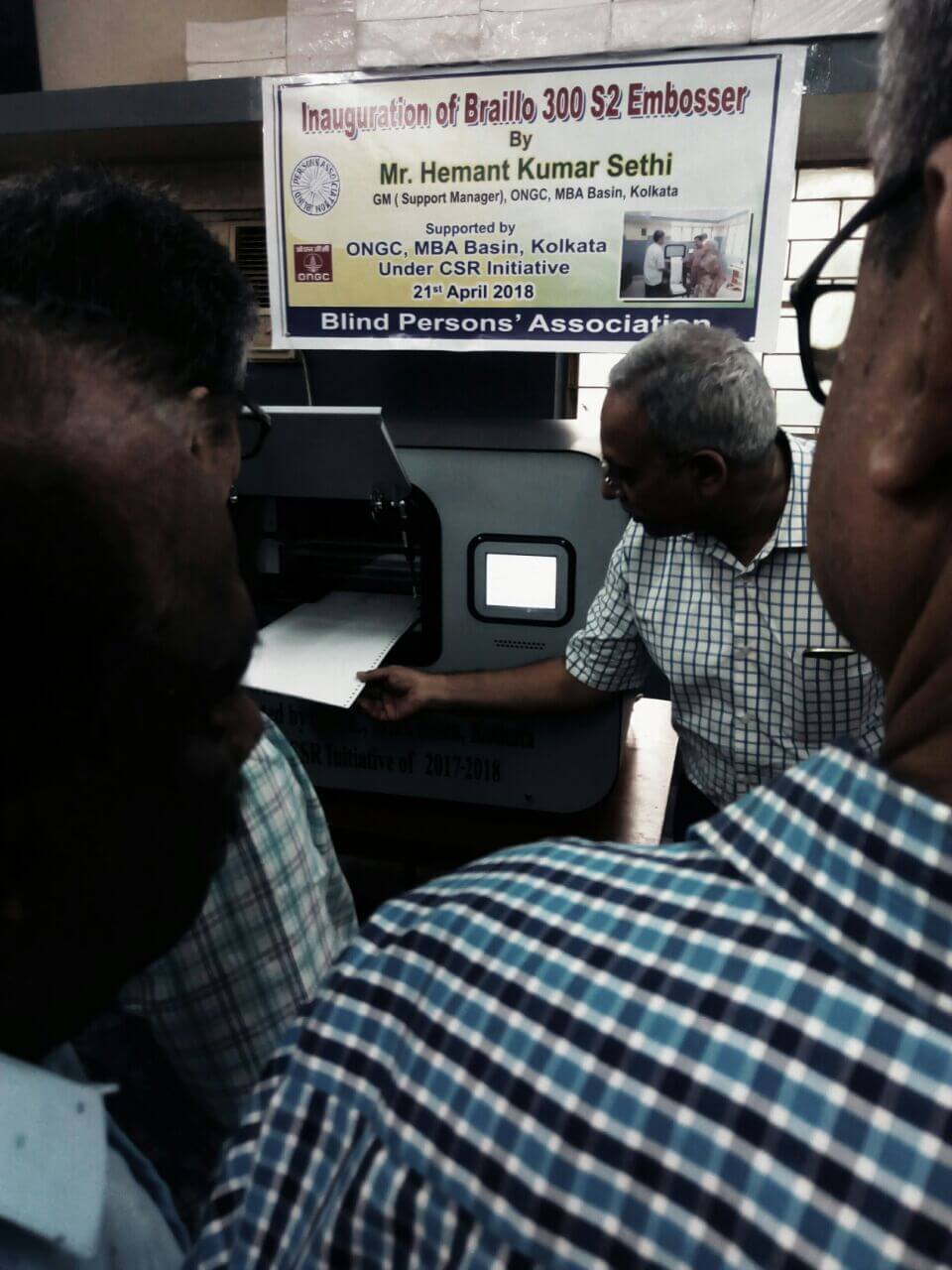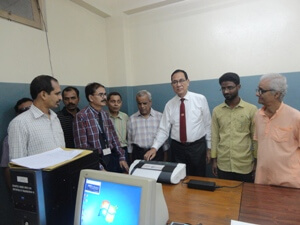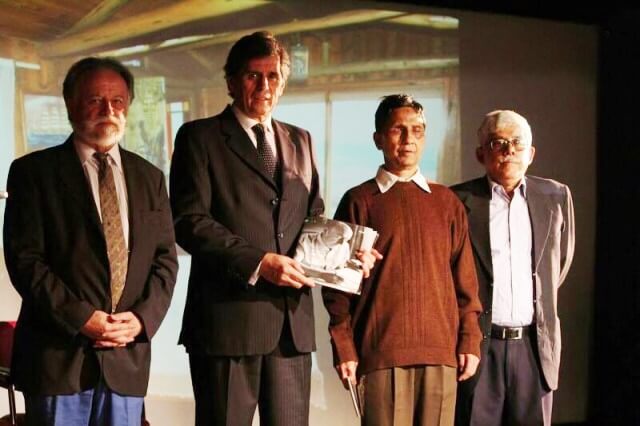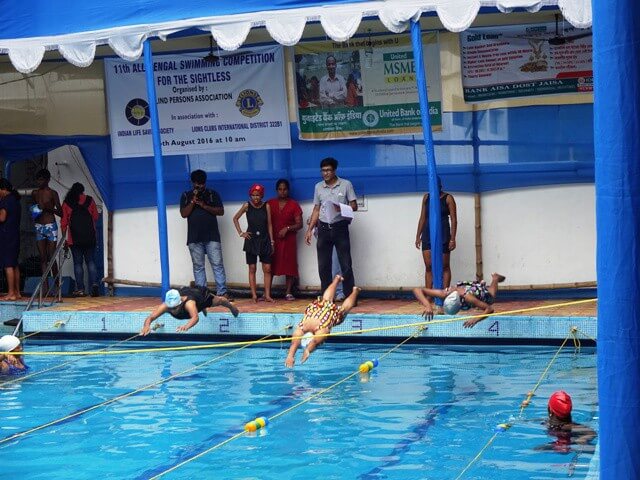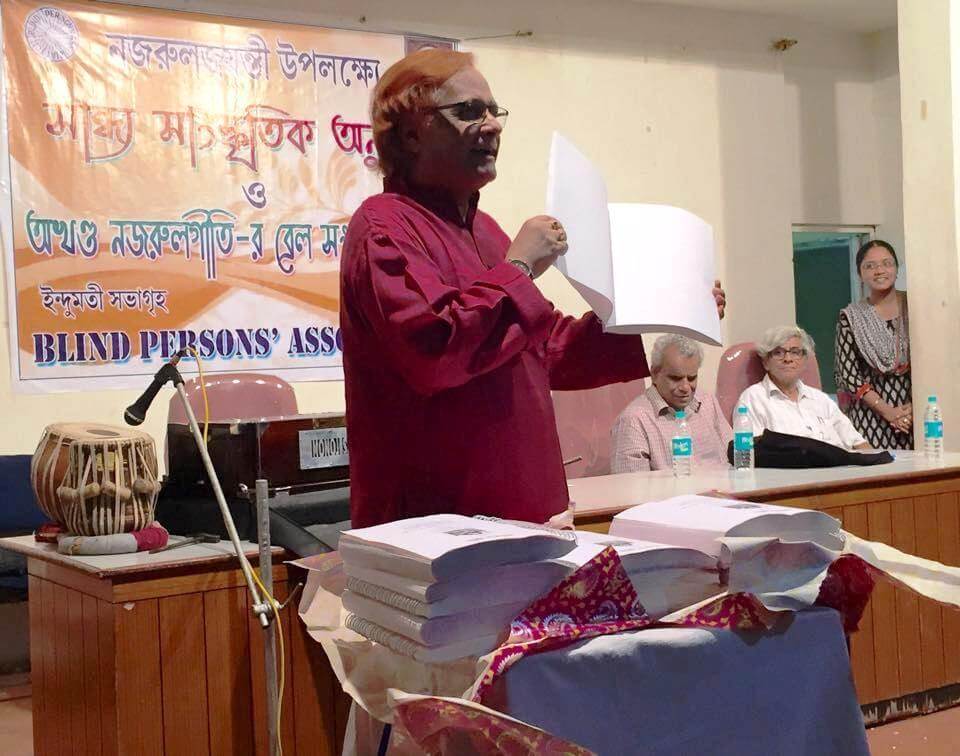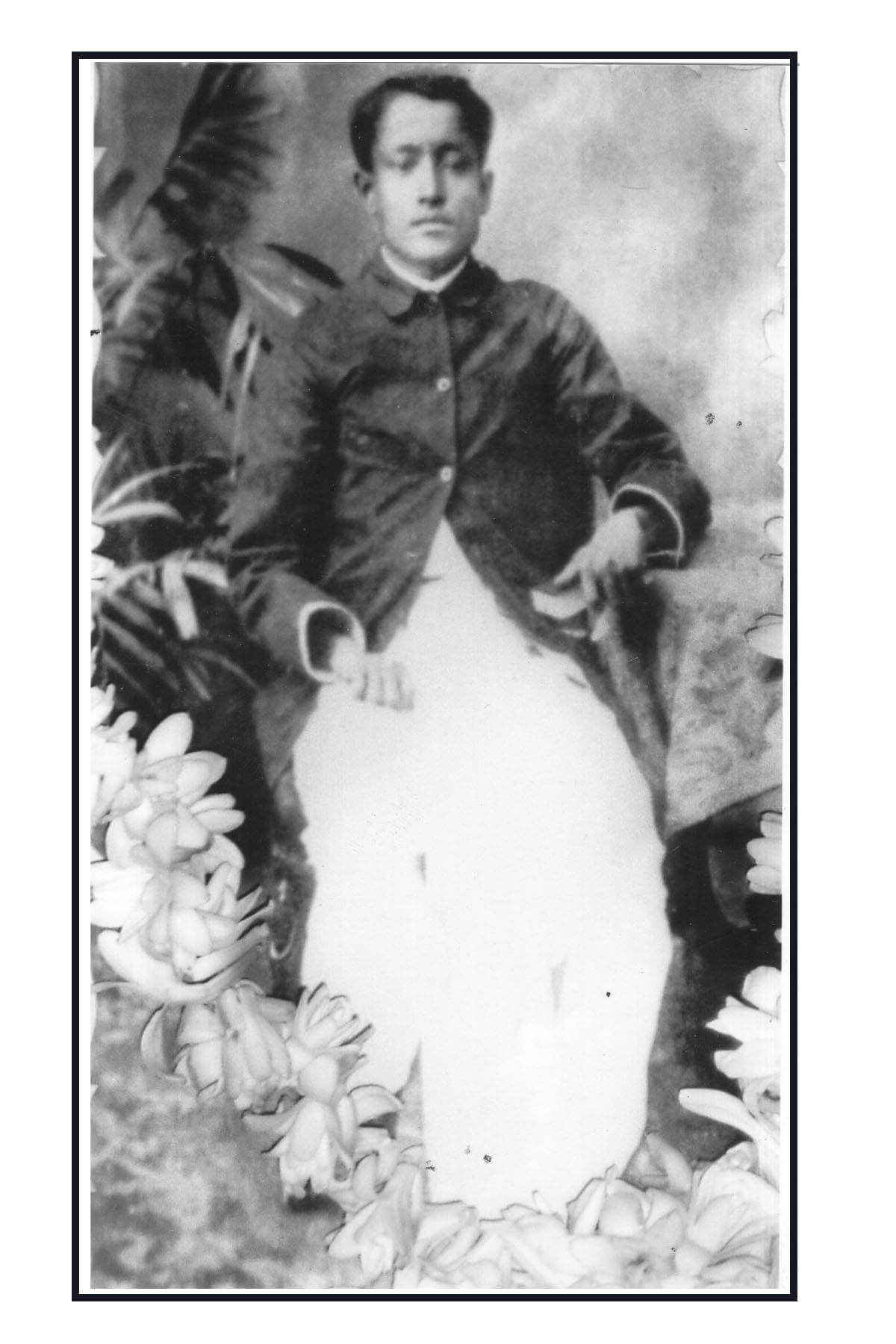Here is an atempt to trace the beginnings of tactile reading and writing for the blind culminating in the genesis of Braille system. This is not an exhaustive study. The purpose of this article is to evaluate the contribution of Monsieur Louis Braille in bringing the light of knowledge to the blind people on the occasion of his birth bicentenary.
The Early Years
When in the Vedic era text was handed down through oral tradition, the blind sages like Andha Muni of the Ramayana, Dirghatama of the Mahavarata or Tiresias in Greek mythology earned respect as scholars. As reading and writing began, the blind were virtually banished from the world of letters. Homer, the poet of the Iliad and the Odyssey in the eighty century BC, earned the most respectable position ancient literature could admit to a blind poet. History does not bear proof to the real existence of any of these prophets. The blind people in the past could for the most aspire for the profession of a minstrel. They had to wait for centuries for real education which could dispel the darkness of ignorance and ignominy from their life.
Didymus the Blind (313-398) was an ecclesiastical writer of Alexandria. Although he became blind at the age of four, he succeeded in mastering the whole gamut of the sciences then known, with the help of his astonishing memory. Upon entering the service of the Church he was placed at the head of the Catechetical School of Alexandria. He found ways to help blind people to read, and experimented with carved wooden letters, a precursor to embossed letters. John Milton (1608-1674) earned fame as a blind poet. But he lost his sight at the age of forty-six. He had his friends for helping him in his reading and writing when he wrote Paradise Lost, Paradise Regained and Samson Agonistes.
Valentin Haüy, the Pioneer
The history of school education of the sightless hardly dates back to the late eighteenth century which began with the establishment of Royal Institute for Blind Children by Valentin Haüy (1745-1822) in Paris in 1784. His first pupil, Francois Lesueur, whom he met by accident, impressed him with his capability of identifying coin by touch. The seventeen-year-old boy had to support his large family by begging. Haüy had to recompense for his lost earning. He is also credited with the production of the first-ever embossed book for the blind in the same year. Adet and Hassenfratz contrived the ingenious method of producing tactile writing at the suggestion and request of Haüy in 1783. It was to trace the letters in a bold hand with glutinous ink over which sand was spread, so as to form a rough sort of relief or tangible writing.
The first book embossed by Haüy for the use of the blind was “Essay on Education of the Blind” (1786) in which he explained his methods. The style of type adopted by Haüy was the French script resembling the legal manuscripts of the time. The capital and small letters were respectively fourteen and seven and a half millimetres high. The book was a quarto of 111 pages, printed on one side only, two pages being gummed together back to back, to preserve the relief. The pages were embossed from metal type by the blind children of Haüy’s school under the direction of Clousier, the court printer.
Haüy’s achievement inspired the setting up of blind schools in Liverpool in 1791 and in Vienna in 1804. King Alexander I of Russia invited Haüy to set up a blind school at St. Petersburg in 1806. He was felicitated at the Berlin Academy of Sciences where he demonstrated his methods to the King of Prussia which paved the way for the inauguration of a school for the blind in Berlin in 1806. In 1832 Dr. Samuel Gridley Howe founded Boston School for the Blind, later known as Perkins Institution, the first of its kind in America.
The early Attempts at Tactile Writing
During the early years of the Renaissance attempts were made to devise some method of reading and writing for the sightless. Among others, Girolamo Cardano (1501-1576), an Italian mathematician, had pointed out a way of teaching the blind to read and write by the sense of touch. They were to trace with a steel bodkin or stylus the outline of each of the letters of the alphabet, engraved on metal, until they could distinguish the letters by the sense of touch and reproduce them on paper. Cardano, however, failed to suggest how to write on a straight line with uniformity of space between the lines. In 1575 Rampazetto produced at Rome prints in intaglio from letters carved in wood. In 1580 Francesco Lucas of Madrid engraved letters in wood for the instruction of the blind; but the letters being sunk in the wood, the outlines could not as readily be followed with the fingertips. In 1640 Pierre Moreau, a notary at Paris, had movable letters cast for the use of the blind, but for lack of means he was unable to follow up his undertaking.
In the late seventeenth century Bernouilli, a Swiss scholar, had the alphabet incised deeply on a thin wooden board for his friend’s talented sightless daughter Elizabeth Waldkirch. She traced out the form of the letters with her finger, then with a pencil, and by this means learnt to work correctly on paper with a pencil and even with ink. Apart from playing several musical instruments, She learnt to speak and write Latin, French, and German, and kept up a voluminous correspondence with her family and friends in all three languages.
Montesquieu wrote of blind men’s ability to play cards and safely move along crowded streets of Paris in Letter XXXII in his famous “Persian Letters” published in 1721. The narrator met these men at the almshouse of the “Quinze-Vingts” founded at Paris, in 1254 by king Louis IX of France on his return from Palestine for three hundred knights whose eyes had been put out by the Saracens during the Crusade. In 1749 Dennis Diderot (1713-1784) published “An Essay on Blindness” in which he developed the idea of teaching the blind to read through the sense of touch. He met Nicolas Saunderson (1682-1739), a blind professor of mathematics at Cambridge University who used a self-styled tactile abacus for complex calculation. Haüy put Diderot’s idea into reality in a few years. But for Diderot it was also an example of the idea of survival through adaptation, and his materialist atheism got him into prison for three months. The controversy unleashed by Diderot’s questioning god’s existence and his subsequent imprisonment made this essay famous and at the same time the idea of blind men’s tactile ability attracted serious attention.
Maria Theresa yon Paradis of Vienna (1759-1822), another sightless prodigy of music, was taught to read by means of pins stuck into a cushion in the shape of the letters of the alphabet. When she had learnt their forms by passing her fingers over the pinheads, she was able to read when the writing was pricked through stout paper or cardboard. Herr von Kempellen invented a press for her by means of which she printed German characters in relief.
In 1827 books were printed in relief, for the first time–Roman capital letters–by James Gall of Edinburgh, who later introduced the art of embossed printing into England. In his early printing the letters had no curves, but were angular and with sharp edges. In 1832 Edinburgh Society of Arts offered a gold medal value £20 for the best method of printing for the blind. There were nineteen competitors during the next few years. The medal was awarded to Dr. Edmund Fry, whose alphabet consisted of the ordinary capital letters denuded of their small strokes. It never attained any practical success.
John Alston, Hon. Treasurer of Glasgow Asylum, printed several books in embossed Roman capitals. His works included the whole Bible in 1840. He also invented the Alston writing frame, superseded, like many other devices, by Braille system. As his type was rather small and not very legible, his system did not stand the test of time.
Lucas invented a stenographic system formed of arbitrary characters and of numerous contractions. In this system the Gospel of St. John and the Acts of the Apostles were printed in 1837 and 1838 respectively. Lucas’s type was adopted by the London Society for Teaching the Blind to Read, at their establishment at Swiss Cottage, London, and a press set up for the production of literature in that type. The Society took up a project for sending books in Lucas type to India and China.
Dr. William Moon of England (1818-1894), who lost his sight at the tender age of twenty-one, devised, towards 1845, an alphabet formed of more or less arbitrary characters which either resemble or suggest a resemblance to the Roman letters. The first book in Moon’s system appeared in 1847. Moon’s books, though easy to read owing to their simple large type and boldness of relief, are very bulky and expensive. It is useful chiefly for adults whose finger-touch has been dulled by age or manual labour. Books in Moon type are still available in England. Although Moon type came after Braille system, This type was so popular that it was adapted to around four hundred foreign languages and dialects and even a Moon typewriter was also invented.
The Advent of Braille
Monsieur Louis Braille (1809-1852) was a student of Haüy’s school. When he joined the school in 1819, it had a total of fourteen books embossed in Guillié script, an improvement on Haüy’s embossed script by Sébastien Guillié, the Director of the school. There was no easy method for writing by the students themselves. Charles Barbier (1767-1841), an artillery officer, invented a tactile code of dots for sending short secret messages at night. The system involved six columns of two dots each produced on a thick paper by a stylus. Barbier might have derived his idea from Father Lana’s code of nine dots arranged in 3×3 matrix formulated in 1617. His system was never actually used in the army. However, since this required reading by touch, Barbier realised its utility for the blind people. He visited Braille’s school in 1823 and demonstrated his method to its students. Louis immediately found its usefulness as he could feel the characters by touch. He proposed certain improvements, but the army veteran was not ready to pay heed to a blind boy’s suggestions. Barbier’s symbols represented 36 sounds. That is why he named it sonography. It did not have spaces or punctuations. The size of the symbols in 6×2 dots matrix was too wide for a fingertip.
Braille was not discouraged by Barbier’s rejection. He went on experimenting with Barbier’s code and developed a new system of six dots, small enough for a single finger-tip, easy to remember and capable of representing all characters and punctuation in the French language. He arranged six dots in two vertical columns of three dots each. Barbier’s 6 x 2 matrix gives the possibility of 4,095 combinations, too many to be required by any script. He only used 36 out of these symbols. Braille realised that 3 x 2 gives 63 possible combinations and a blank cell for use as space between words. Barbier’s method for the first time considered the possibility of using dots in place of raised letters for tangible writing. Braille improved it to perfection. He acknowledged his debt to Barbier and the latter accorded full credit to his successor for his innovations in writing.
Braille’s fellow students and even some of his blind tutors learned his method and extensively used it for writing. He had made many trials including a transcription of portions of “La Grammaire des Grammaires” in 1827 to test his system. By 1829 he published the first explanation of his method. He dictated the prose to André Pignier, the Director of the school. The text was embossed in Guillié script and Braille wrote the examples in embossed point. The title, “System for writing words, music and plainchant for the use of the blind and arranged for them by M. Braille” gives a clear indication of its contents. In 1832 two hand written Braille volumes were transcribed entitled “Geography of Asia” and “Geography of France”. Braille revised the book on his alphabet in 1837, the same year the students at the school published the first Braille textbook in the world, a three-volume history of France. The production of the book was carried out by the students of the school under the supervision of Alexandre Fornier, a favourite student of Valentin Haüy. The first huge volume of format 22×28 sq. cms. weighs 1,750 grams even though it has only 152 pages. Each page contains 25 lines with an approximate average of 34 letters.
The genius of Louis Braille is clearly evident from the logical arrangement of the Braille characters. He divided his characters in 7 lines. The first 10 characters of the 63 combinations representing the first line are produced using just four dots of the two upper rows of the matrix. The next 40 combinations are sequential variations of the first line. The 13 remaining characters also follow a simple logic. Once the first line is memorised, it is easy to learn the rest of the code.
Louis Braille invented his own writing apparatus. The board was hinged at the top to a frame that held the paper, and down the upper surfaces of the sides of the frame there were a series of depressions. For each line of writing the board held three parallel grooves. The guide, made of a single piece of metal with two or three rows of cells, could be moved down the page as required by fitting the knobs on the under side into the depressions on the frame. The central part of the guide had to be lower than the edge so that it was in contact with the paper. A stylus was provided for making the dots, and each shape had to be made in reverse and the words written from right to left along the line so that they would appear in the correct reading order when the page was turned over. In 1834 the same Alexandre Fornier made the first attempt to adapt the writing frame so that writing could occur on both sides of the paper. By leaving the height of one cell between each line of writing on the first side of the page it was possible to write between the lines on the second side.
Braille also developed a method, Raphigraphy, by which blind people could write punching dots in such a way that there could be recognition by vision as well as touch. His knowledge of French letters used in raised form at the school gave him the idea. It was an approximations of the alphabetic shapes in dots. A writing frame on which equidistant dots could be made was prepared. Raphigraphy was slow, complicated and tedious as compared with his earlier code. It required too many dots pressed in linear formation. The idea was a unique one because it gave him and his friends a way to communicate with the sighted world.
The Diffusion of Braille System
Though Braille’s system was readily accepted by his friends, the school authorities, and later some of the directors of institutions for the blind abroad, did not understand how suitable the code was for tactile reading and writing. Their chief objection was that Braille characters did not bear any resemblance with print. In France Braille was officially accepted in 1854, two years after his death. It was adopted in Switzerland in 1858 and in England in 1870. New methods of embossed script resembling print, even somewhat arbitrarily, were developed in Germany, Austria, Holland, Switzerland, and Denmark when Braille was being widely used in France. The acceptance of Braille system in the Continent was possible through the movement inaugurated in England by the British and Foreign Blind Association, now known as Royal National Institute for the Blind. In 1871 Braille books were printed for the first time from stereo- typed plates by the Association. The press and library of this organisation has ever since been playing a pioneering role in promoting Braille reading all over the world.
Though Braille system reached the other side of the Atlantic about 1860 with Dr. Simon Pollak of Missouri School for the Blind, it faced a more severe resistance there. In 1835 Dr. Howe published several books in Boston letter, a variation upon the Galston type. In 1868 William B. Wait, Superintendent of the New York Institution, proposed a dot code of the same six dots arranged in three columns of two dots each that became known as the New York Point system. In 1878 Joel W. Smith of Perkins Institution proposed a second American point system of writing, modelled closely after the original Braille system. This system, later known as American Braille assigned the most frequently used characters to Braille figures containing fewer dots. It was a close competitor of New York Point, which was in vogue in most of the schools. The actual Braille system of six dots was officially accepted in the States in 1916.
When the first attempt was made to educate the blind in Kolkata at the Fort William in the 1840’s, books embossed in Lucas type were provided by the London Society for Teaching the Blind to Read. There is, however, no trace of that school or the books at present. Braille system reached China in 1879 when The Rev. William Hill-Murray, an agent of the National Bible Society, started a school for the Blind in Peking. The legend goes that a missionary in China paraded a blind man reading Braille in public to arrest attention to his preaching. The missionaries established the first blind school in India in 1886 at Amritshar. Mrs. Shirreff, wife of Rev. FAP Shirreff, MA, Fellow of the Punjab University, slightly modified general Braille code in 1888 for Hindustani, Hindi and Telegu. The second blind school was set up in Kolkata in 1894 by Lal Bihari Shah. Like Valentin Haüy, Shah found a blind beggar for his first student and had to compensate for his loss of income. He devised a Bengali Braille code which was widely used in Bengal until Bharati Braille, the uniform Braille code for Indian languages was adopted after 1949. The credit of rendering the first Bengali Braille code goes to Shri Ramananda Chatterjee, the celebrated editor of the Bengali periodical Prabasi.
Braille was not established as a system through a patent. Blind people in different countries proved its utility through prolonged use. The application of computer in Braille production has rendered it much easier and cheaper. A blind person can read the screen of a computer or a cell phone using a refreshable Braille display device. Braille is still the sole prop to the blind people for both its simplicity and its relatively low cost. It alone gives him the pleasant feeling of actual reading and writing. A blind man can express his own mind using a Braille writing apparatus spending just Rs. 20.
Amiyo Biswas

